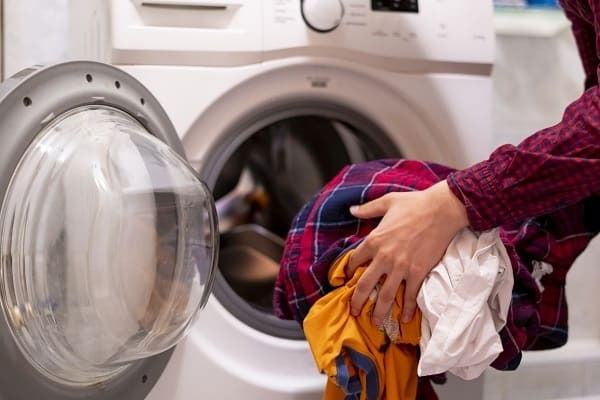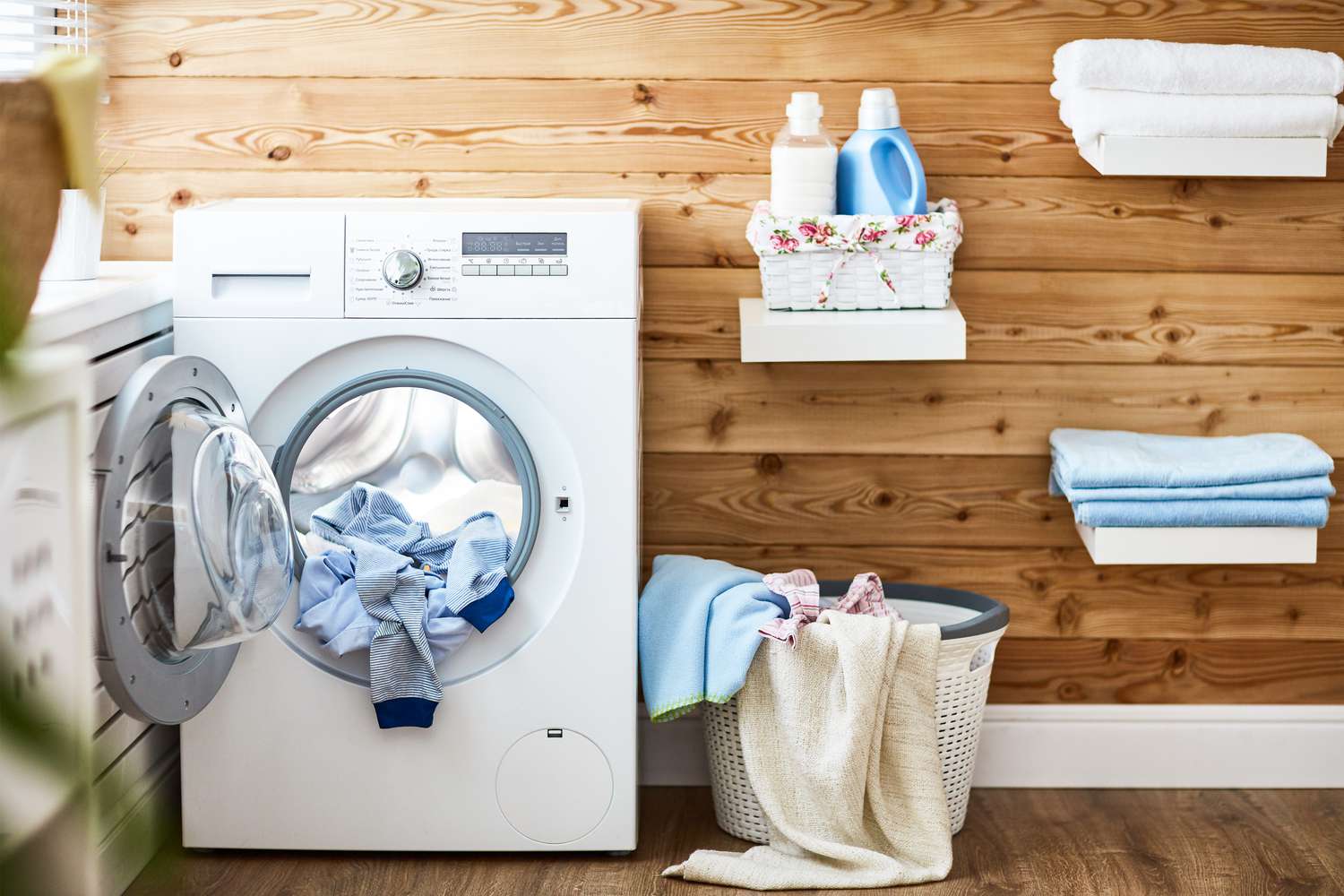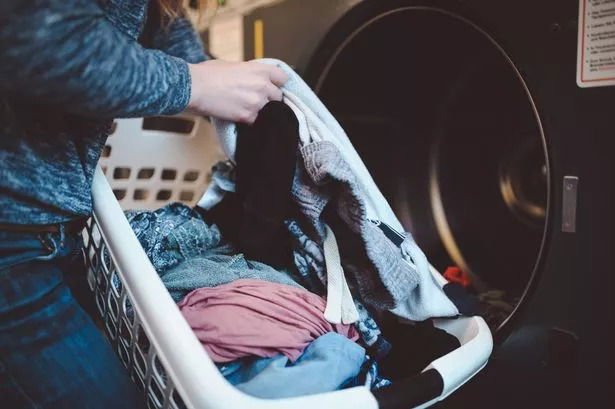
Do you usually wash your laundry at 40°C, thinking it’s the perfect balance between cleanliness and fabric care? While it’s a common practice, it may not be as effective as you believe, especially when it comes to killing bacteria and ensuring proper hygiene. Should you reconsider your laundry routine? Here’s what experts have to say.
Why 40°C May Not Be Enough to Kill Bacteria
Though 40°C is often viewed as a reasonable compromise that’s gentle on clothes, it falls short when it comes to fully sanitizing laundry.
Here’s why:
Resistant germs: Harmful bacteria like E. coli and salmonella, often found on underwear, towels, and bed linens, can survive a 40°C wash.
Incomplete residue removal: At this temperature, body oils and other organic dirt might not completely dissolve, leaving clothes feeling less than fresh.
Cross-contamination risks: If bacteria aren’t destroyed, they can transfer to other items during the wash cycle.
What’s the Best Temperature for Truly Clean Laundry?
60°C – For a More Hygienic Clean
Laundry professionals recommend 60°C for certain items to ensure bacteria and grime are properly removed:
- Towels and bed sheets
- Underwear
- Sportswear or work clothes exposed to heavy soiling
At this higher temperature, bacteria are killed off more reliably, and body oils are better broken down.

30°C – A Low-Temperature Option with the Right Detergent
If you want to conserve energy or protect delicate fabrics, washing at 30°C is possible—just be sure to use enzymatic detergents, which are designed to clean effectively even in cooler water.
Should You Stop Washing at 40°C Altogether?
Not at all. Washing at 40°C can still be a practical choice for:
- Lightly soiled, everyday garments
- Clothes that don’t require deep sanitization
However, to enhance hygiene at this temperature, consider:
- Adding a laundry disinfectant (such as white vinegar, essential oils with antibacterial properties, or commercial sanitizers)
- Letting your washing machine dry out completely after use to prevent bacteria build-up in the drum
- Running a hot wash (60°C or higher) at least once a month to clean your machine and reduce odors
Recommended Wash Temperatures by Fabric Type
| Laundry Type | Suggested Temperature |
|---|---|
| Underwear, towels, sheets | 60°C |
| Sports or heavily soiled wear | 60°C |
| Everyday clothing (light soil) | 30–40°C with a quality detergent |
| Delicates (wool, silk, etc.) | 30°C or gentle cycle |
Final Thoughts
Washing your laundry at 40°C isn’t wrong, but it’s not always the best option for deep hygiene. For truly clean results, match your washing temperature to the type of clothing and use the appropriate cleaning agents.
Time to rethink your laundry strategy? Your clothes—and your health—might thank you!
5 mistakes when using washing machine, making clothes dirtier the more you wash them

Here are some mistakes when using the washing machine:
1. Do not take out the clothes to dry immediately after washing
Many people don’t hang them to dry right away after washing them but rather leave them for a while, perhaps overnight.
After washing, dry the clothing immediately to ensure that they are flat and free of bacteria.
Because the washed garments are moist, keeping them in the washing machine produces a lot of steam, creating ideal circumstances for germs and mold to flourish.
This not only makes the clothes smell horrible, but it also causes an unpleasant odor in the washer. As a result, after washing, you should take the clothing out to dry right away; do not keep them in the washing machine for too long.

2. Close the washing machine lid immediately after washing and take out the clothes
Experts recommend that after removing the clothing from the washing machine, you open the lid for roughly 2-3 hours before closing it again, especially with horizontal drum washing machines (front doors). The reason for this is that front-loading washing machines include a barrier and rubber gasket to keep water from leaking out while in use.
However, because of this characteristic, any lingering steam and moisture inside the washing machine after the washing cycle is complete will be unable to evaporate and escape. This will promote the growth and development of bacteria and mold, making our garments even dirty.
Furthermore, to avoid dust from entering the washing machine, do not leave the lid open for an extended time. And, for horizontal drum washing machines, opening the lid for too long will restrict the passage, harming the connection between the door and the body of the washing machine.

3. Wash underwear with a washing machine
90% of individuals certainly wash their underwear in a washing machine, however, this is a bad habit.
Hand wash your underwear and scrub it thoroughly to remove stains. If possible, wash in warm water and avoid placing it in the washing machine with other garments to prevent bacteria from spreading. After washing, dry it in a cool location or in the sun to disinfect.
4. Wash bedding with cold water
Dust mites thrive in blankets, bed sheets, and pillowcases. Not only that, but they are susceptible to yellow stains caused by dead cells and sweat released by the body.
Washing with cold water will save some power, but it will not adequately remove yellow stains or kill bacteria.
It is preferable to wash them with hot water every two weeks, but be cautious not to use too hot water to avoid deforming the material.

5. Cleaning the washing machine
There are small gaps and holes between the washing drum and the exterior shell of the washing machine that allows water to enter and depart. During the washing process, dirt will adhere to the inside of the washing machine or the corners of the drain pipe via these microscopic gaps and holes, producing bacteria.


















